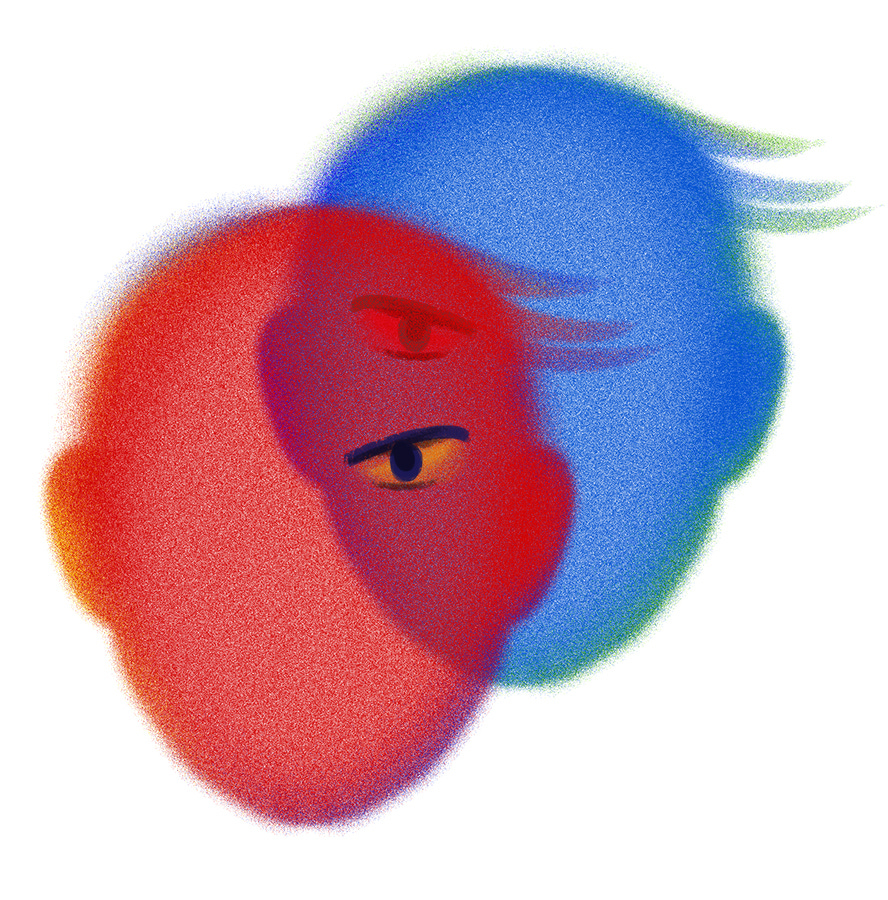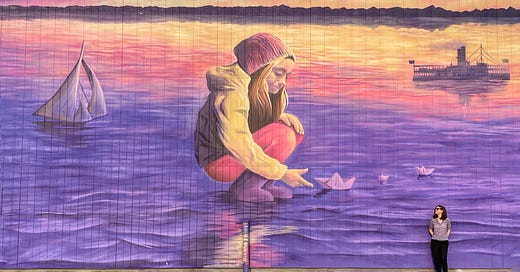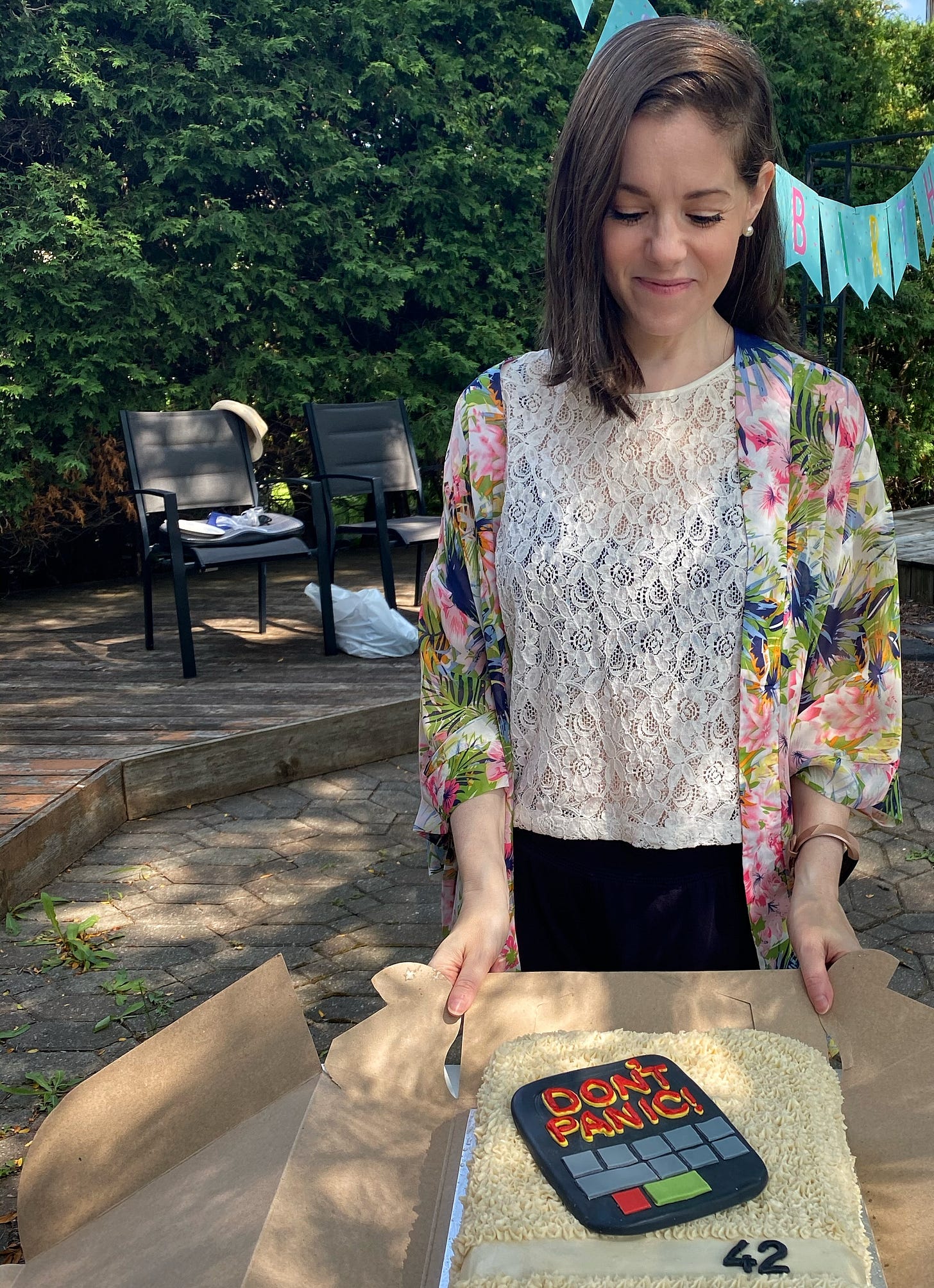The Curious About Everything Newsletter #10
A murder mystery in the Outback, eels, monuments 6000 years older than Stonehenge, and much more.
A lot has happened in the world since CAE#9, from the Olympics to the fall of Afghanistan, to the rise of Delta worldwide. My field of links overfloweth, too, so this is a dense newsletter.
Due to the volume of reads I wanted to share, I’ve modified how I presented the “grab bag” links to group and now segmented them into topics. Please let me know if you have a preference between this format, vs. one vat of links? I’m not sure which I prefer yet, and defer to my readers!
Personal Updates
First of all, thank you for all the birthday wishes, gift cards, and new members of my Patreon community—all of via CAE#9. The Patreon is up to 246 people right now (yay!). They’ve been “treated” (ahem) most recently to swearing via the blooper reel for the initial Patreon video. Next up is a video AMA answering questions people asked about my life, the leak, travels, and more.
A few days ago, I turned 42 in style thanks to my brother and his girlfriend. And by “style” I mean “dwarfed by an enormous cake in the shape of a towel”. One of my favourite books is Douglas Adams’ Hitchhiker’s Guide to the Galaxy, and fans will know that 42 is both the meaning of life, the universe and everything—and also not an excuse to leave your towel at home. This cake was rich, gluten free, dairy free, and somehow also delicious. I have the rest of it frozen to consume and/or foist off on sugar-starved visitors.
It was tough on my body to stay upright for the celebrations, but well worth the flat time I needed to recover. A few close friends drove up from Montreal, and we gathered in a friend’s backyard for BBQ’d corn, cake, and good conversation.
I look at these pictures and marvel at how the pain just does not show. Invisible illness is discussed frequently in popular culture. Still insufficiently, I think, because it’s a privilege to look around you and assume everyone is as they seem. Yet it happens all of the time.
My travels taught me that some truths are universal, and that we are more alike than we think. My years of chronic pain taught me to dig below the surface to understand the things that make us different.
Important Things I Read This Month:
So many interesting things to be curious about.
1️⃣ Knives Outback | Truly*Adventurous, August 20, 2021. By Mitch Moxley.
A murder mystery in Australia’s Outback:
And so it was on that sweltering day, December 16, 2017, that Paddy sat down to nurse a series of cold XXXX Golds in his koozie — beers, it turned out, that would be his last. Paddy Moriarty and his dog were about to vanish without a trace, kicking off an investigation that would turn the town upside down and spark international media coverage. Initial concern for his wellbeing soon gave way to darker rumors of murder.
In this town — now down to 12 residents — everyone was a possible suspect.
Engaging writing, and a long story that pieces together interviews, profiles, and the mystery of Paddy’s disappearance, including the thoughts of the detective sergeant who was sent to unravel it.
2️⃣ I Woke Up From a Coma and Couldn’t Escape the Guy Pretending to Be My Boyfriend | Narratively, August 26, 2021. By Brooke Knisley.

A raw, moving article about memory, abuse, and relationships.
According to my mother, in the early days of my hospitalization, every time Stanley entered my hospital room and announced himself to the doctors and nurses as my boyfriend, I threw out an arm in a warped imitation of Vanna White and exclaimed, “I guess I have a boyfriend now.” Cue Pat Sajak chortling good-naturedly.
It came back to me early on, distinctly, that he had never wanted to be my boyfriend before this.
But whenever I broached the subject, Stanley told me he hadn’t known what he wanted before, but uncertain of whether I would live or die, he became aware of how he felt. My skepticism remained even as my memory wavered.
Yet, he showed up each day, and I began to believe him when he said his feelings had changed. Trapped in my bed and visited by therapists I only partially knew and family members I only vaguely recognized, it was nice to have someone else come see me and do word puzzles in bed with me, even if I didn’t always remember who he was right away.
I’m not going to spoil any more of the piece, but I did want to highlight a very important sentence:
I’m sure the leeway I gave Stanley despite the boundaries he crossed — because of his reaction to a truth I hated so much — looked like love.
It’s so dangerous to look at bulldozing-as-devotion and see it as love or kindness. Yet often society, and those around us who aren’t there moment to moment, urge us to give that aggressiveness more grace. “Oh, they just really care about you.”
If someone is pushing past boundaries you have set and paints themselves as the victim when you calmly remind them of that fact, red flag city. Run.
3️⃣ Where Do Eels Come From? | The New Yorker, May 18, 2020. By Brooke Jarvis.
One of my favourite nature facts is that we don’t know how eels have sex. I’m sharing this here because my cousin sent me a recent TikTok video where a scientist tells his audience this fact and it reminded me of Jarvis’ piece.
I’m not talking about just you and me, either. Scientists too. NO ONE can figure out how eels have sex. Don’t believe me?
Scientists have put G.P.S. trackers on silver eels beginning their migration; they’ve used hormones to bring females into heat, transported them to the breeding grounds, and attached them to buoys to use their pheromones as bait. They have dropped microphones into the water and opened the stomachs of predators. And yet no one has ever seen Anguilla anguilla mating anywhere, or so much as set eyes on a mature eel, living or dead, in the Sargasso Sea.
If you prefer video, here is a TED talk on the same topic:
Eels! A mystery. Moving on…
4️⃣ How a Board Game About Birds Became a Surprise Blockbuster | Slate, August 15, 2021. By Dan Kois.
A wonderful review of Elizabeth Hargrave’s board game Wingspan. It’s about birds, so you know I’m a fan already. Plus, it came out on my birthday! Many of you sent me this piece, and Wingspan really does sound like a thoughtful, lovely game to play. It’s shaking up the board game industry, and I’m here for it.
My family discovered Wingspan, with its beautiful, hand-painted cards and gentle, strategic gameplay, last year, and soon we were playing it every weekend. Wingspan has transformed the way I think about games, about competition, and even about art. And I’m not alone. Wingspan has sent people flocking not only to gaming but to game design. However the board game industry transforms in the next few years, it’ll be Wingspan that causes it.
And:
Wingspan is imbued with a real sense of wonder at the natural world and the place these birds occupy in it. That comes from Hargrave’s history as a nature lover and birder, the kind of person who pooh-poohs her own ability to identify bird calls but then, in the middle of a conversation, cocks her head and says, “Oh, that’s a Carolina wren. They like to repeat three, four, five times in a row.”
Sign me up!
5️⃣ An immense mystery older than Stonehenge | BBC Travel, August 16, 2021. By Andrew Curry.
A wondrous piece about the discoveries at Turkey's Gobekli Tepe, and how they remind us of what little we know about the history of civilization. Built 6,000 yrs prior to Stonehenge, the structures show, contrary to what we thought, that complex ritual came prior to agriculture:
Schmidt thought that small, nomadic bands from across the region were motivated by their beliefs to join forces on the hilltop for periodic building projects, hold great feasts and then scatter again. The site, Schmidt argued, was a ritual centre, perhaps some sort of burial or death cult complex, rather than a settlement.
That was a big claim. Archaeologists had long thought complex ritual and organised religion were luxuries that societies developed only once they began domesticating crops and animals, a transition known as the Neolithic. Once they had a food surplus, the thinking went, they could devote their extra resources to rituals and monuments.
Gobekli Tepe, Schmidt told me, turned that timeline upside down. The stone tools at the site, backed up by radiocarbon dates, placed it firmly in the pre-Neolithic era. More than 25 years after the first excavations there, there is still no evidence for domesticated plants or animals. And Schmidt didn't think anyone lived at the site full-time. He called it a "cathedral on a hill".
If that was true, it showed that complex ritual and social organisation actually came before settlement and agriculture.
A bombshell for the archeological world, and a fascinating piece by a great writer.
6️⃣ The Unlikely Story of a Sex Trafficking Survivor and the Instagram Account That Saved Her Life | Elle Magazine, August 4, 2021. by John H. Tucker.
Megan Lundstrom has a deep understanding about how women end up in dangerous situations, and the societal structures that often keep them there. Excellent profile of a sex trafficking survivor turned sociologist, and the work and research she’s done that has helped changed lives.
Lundstrom was glued to her computer, researching terms like “cult” that might validate her experience. She adopted a makeshift lecture circuit, speaking at any venue that would have her—churches, rotary clubs, hospitals, police precincts. “Do pimps bring the girls in on trains?” asked a skeptical officer. “No,” Lundstrom explained. “They’re already here. They live next door. Their kids go to school with yours.” During one talk at a police station, she connected her laptop to a monitor and posted Backpage ads specific to six regions of Colorado, each listing the number for a separate burner phone. Over the course of her presentation (and the next couple of days), the phones rang, on average, once every five minutes. “She certainly educated me,” a disturbed police chief told a local reporter. That was the beginning of Lundstrom’s research.
“Following the interviews, Henderson shuddered at the findings. Eighteen percent of the women had buyers who worked in law enforcement; 10 percent of victims were trafficked by family members; suicide attempts and overdoses were common exit methods; and the majority of buyers were white, while about 44 percent of the victims were women of color selling sex as a last resort.”
Uncomfortable, important read.
7️⃣ When it comes to breakthrough cases, are we ignoring long Covid once again? | The Guardian, August 12, 2021. By Hannah Davis.
The author has been dealing with long covid for 17 months. In the United States, the CDC has said they aren’t tracking milder breakthrough cases, but that data is of critical importance to a large percentage of people.
We know much more about long Covid than we did this time last year – enough for us to know it’s severe. Research has found ongoing endothelial dysfunction, hypometabolism in the brains of long Covid patients, microclots in long Covid blood samples, reduced aerobic capacity and impaired systemic oxygen extraction in non-hospitalized patients without cardiopulmonary disease, disrupted gut microbiota that persists over time, damage to corneal nerves, immunologic dysfunction persisting for at least eight months, numerous findings of dysautonomia (a common post-viral disorder of the autonomic nervous system), and countless other conditions.
Without data, decisions will be made that will continue to kill and disable people.
As I’ve said here before, a post-viral mess is what started my health spiral, one that eventually led to a mast cell disorder diagnosis. Many long haulers are being diagnosed with similar disorders. I can relate to falling through the cracks. I can only hope that research continues in this domain, and that the CDC does not turn their back on the many people whose “mild” cases turned out to be anything but.
Grab Bag
Sundry links that are worth a click.
🏅 Olympics! A few things that I wanted to share with you:
An Olympics photography roundup curated by Alan Taylor. I always look forward to his photo essays.
Tom Daley knits while watching Olympic springboard final. He finished his sweater just before the finals.
11 sportsmanship Olympic moments, like the sharing of medals, helping other athletes and generally reminding us that while the world is burning literally and figuratively, good behaviour still exists.
A far less happy piece, but one I wanted to shine a light on: one Olympic athlete’s experience with a stalker.
On the idiocy of “soft athletes” and how neither of Naomi Osaka nor Simone Biles come close. “There are productive debates to be had about the merits of things like ‘everyone’s a winner’, or ‘equity-above-all-else’ schooling, as well as the western world’s current definitions, and treatments, of ‘mental health’, all to a backdrop of a world which still ruthlessly rewards perseverance and hard work over quitting-early and indolence. But that nuanced debate about how ‘soft’ the world is simply doesn’t apply in every scenario of someone choosing to prioritise themselves. That would be insane. And yet here we are.”
🦠 Covid links:
For those of you on Instagram, I do a COVID data roundup weekly (usually mid-to-late week). Old roundups are on my profile highlights.
A crash course in how the Delta variant works.
SARS-Cov-2 is airborne, and Delta is very easily transmitted. It also is very good at cleaving to your cells, far better than prior strains. Many of you have asked about masks, knowing I am high risk for complications. It’s important to get a good quality mask that fits tightly. I don’t recommend buying masks on Amazon as there have been many dupes/fakes. So where to get a good mask? (1) In USA: I’ve been sending around these two spreadsheets by @masknerd, who tests a long list of KN95/N95/KN94 masks and their filtering capacity prior to logging them in a detailed chart, which also has a section for kids’ masks that are trustworthy. (2) In CANADA: I’ve used Canada Strong Masks. If you have a very small face, their kids’ respirator mask is a good fit, which of course works for kids too. Slender faces do well with the 510 FN95 mask, and most larger faces are great with the FN95 508 model, or the Layfield duckbill model.
🇦🇫 Afghanistan links: So much horror to watch unfold. Some pieces I thought were worth reading.
The Entirely Predictable Failure of the West's Mission in Afghanistan
The Conversation’s primer on ISIS-K.
And if you wanted to help: my friend Sol, who was born outside Kabul, coordinated a big drive of donation matching for resettlement efforts. He recommends two organizations: The Afghan Women’s Organization Refugee and Immigrant Services (in Canada) and Homes Not Borders (in the United States).
🔗 Other links:
My friend James from Nomadic Notes put together an extensive history of digital nomads, harking back to Arthur C. Clarke in the 1960s. I’ve added it to my long (like we’re close to 7,000 words long) digital nomads and remote work resources page.
Why Even the Fastest Human Can’t Outrun Your House Cat: A new model explains the forces and body design features that limit maximum sprinting speed.
This story of a couple whose lives were derailed (and they were stalked and harassed) by eBay employees is absolutely bonkers, and sickening.
Everything you wanted to know about slime, a single cell organism “that can grow as large as a bath mat, has no brain, no sense of sight or smell, but can solve mazes, learn patterns, keep time, and pass down the wisdom of generations.” Fascinating read.
On the unexpected perils of translation: “You understood all the words correctly, […] but you did not understand the silences between them.”
The mysterious disappearance of the world's longest shrubbery, in India: nothing remains. We’re talking 2,300 miles of thorny shrubs, designed to prevent salt smugglers from sneaking the mineral in from coastal areas to British-controlled states, where it was taxed heavily. The hedge established in 1869 and “expanded to stretch across the length of India, covering an estimated 2,300 miles (3,701km) – the distance from London to Istanbul (then Constantinople)”. And now it’s gone. Interesting read!
🦫 Canadian links:
Ok that’s it, just one tweet. But I laughed! Thanks to Rachel for sending.
That’s it for this month.
-Jodi








Came for the eel sex, stayed for the cake xx
A belated happy birthday! Awesome cake.
I thought you might find the COVID treatment guide from China (in English) interesting,
https://www.alibabacloud.com/covid-19-global-medixchange#J_8102420620
Interesting stuff include the protein to body weight ratios for diet, caution on timing of antibiotics (US hospitals tend to treat everything with antibiotics first, even for viruses), discussion of supplemental oxygen, and herbs that accompany treatment.
We got an oxygen concentrator early on from Banggood.com (I wanted to make sure it shipped direct, and didn't bounce around eBay or Amazon first). I didn't want us or our neighbor to have to go to the hospital just because oxygen was needed. It seemed a logical thing to keep in one's kit. In the last years, seven of our friends have died due to hospital-acquired infections (bronchitis, C. Diff), so I started researching.
If you can take liposomal vitamin C, it is a useful thing. My friend makes her own with a sonic device. I'm considering.
Eels. Sex lives. Who knew. The world has many interesting things. Thanks for sharing them!